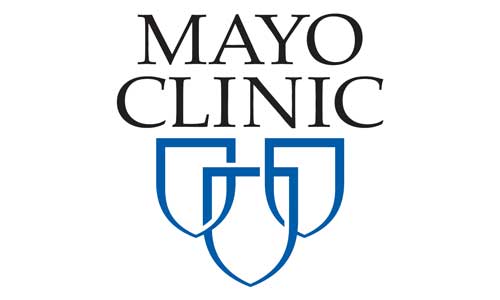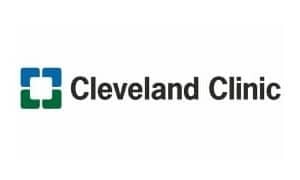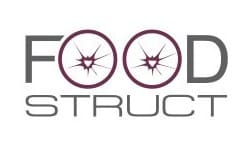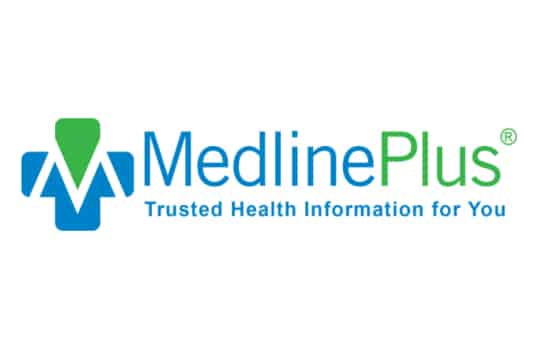What are high blood sugar and insulin resistance?
The food you eat is converted into glucose to feed your cells. Insulin facilitates the absorption of glucose into your cells.1Pancreas Hormones. Endocrine Society. January 24, 2022. Viewed December 7, 2022. Without insulin or insulin-like growth factors, the glucose is not transported to cells to provide the fuel they need. Blood glucose and insulin levels normally rise and fall throughout the day as you eat, fast, and are physically active.
High blood sugar—hyperglycemia—is a condition in the body indicating an abnormally high amount of glucose in the blood. High blood sugar can be caused by any of these conditions:
- Too much glucose in the blood from eating foods that are turned into glucose too quickly, and insulin hasn’t yet been able to transport all this new glucose into cells
- Too little insulin in the blood, usually because the pancreas isn’t producing insulin; this can happen either because the pancreas isn’t functioning to produce insulin, as in type 1 diabetes, or because in the long term the pancreas cannot maintain insulin production needed to respond to high blood glucose levels, as in insulin-dependent type 2 diabetes
- Too much glucose in the blood because cells have become resistant to insulin, and the available insulin cannot facilitate transporting the glucose to cells
Insulin resistance is a condition in which cells in your muscles, fat, and liver don’t respond to insulin’s attempts to facilitate glucose absorption by cells. Metabolic syndrome includes a cluster of conditions including obesity, high blood pressure, high cholesterol, and type 2 diabetes.2Dansinger M. Insulin Resistance. Web MD. June 23, 2021. Viewed August 12, 2022.
Chronic levels of high blood glucose may lead to chronically high levels of insulin in your blood (hyperinsulinemia). While insulin and its related insulin-like growth factors (IGFs) play a crucial role in normal growth and development, they may also create an environment favorable to cancer growth.3Brahmkhatri VP, Prasanna C, Atreya HS. Insulin-like growth factor system in cancer: novel targeted therapies. Biomed Research International. 2015;2015:538019. If blood sugar and insulin are consistently high over a long time, normal (nonmalignant) cells can become resistant to insulin’s attempts to transport glucose into the cells.
What is the role of insulin-like growth factors?
Insulin-like growth factors including IGF-1 and IGF-2 have many functions. These IGFs regulate cell division, development/specialization, and normal cell death (apoptosis). IGF-1 may also be necessary for normal insulin sensitivity,4Clemmons DR. Role of insulin-like growth factor in maintaining normal glucose homeostasis. Hormone Research. 2004;62 Suppl 1:77-82. but high levels of IGF-1 are linked to cancer growth.5Sax AT, Jenkins DG et al. The insulin-like growth factor axis: a biological mechanism linking physical activity to colorectal cancer survival. Cancer Epidemiology. 2014 Aug;38(4):455-9.
When cells signal a need for glucose—normally during the process of dividing and functioning—insulin and IGFs operate to deliver the glucose. During a state of insulin resistance, some of the insulin receptors in nonmalignant cells are not receptive to insulin, and glucose isn’t delivered efficiently. However, because cancer cells in particular require a constant supply of glucose and IGFs to continually reproduce themselves, cancer cells have developed workarounds to insulin resistance. In fact, cancer takes advantage of a state of insulin resistance to create a favorable tumor microenvironment.6Alschuler LN, Gazella KA. The Definitive Guide to Thriving after Cancer: A Five-Step Integrative Plan to Reduce the Risk of Recurrence and Build Lifelong Health. Berkeley, California: Ten Speed Press. 2013. In a state of chronically high blood glucose, normal cells become resistant to the absorption of too much glucose, which is promoted by insulin. However at least some cancer cells continue to respond to insulin, absorbing both glucose and factors that stimulate cell growth, such IGF-1.
Insulin-like growth factor binding protein 3 (IGFBP-3) binds IGF-1, reducing the IGF-1’s ability to promote tumor progression.7Panasiti V, Naspi A et al. Correlation between insulin-like growth factor binding protein-3 serum level and melanoma progression. Journal of the American Academy of Dermatology. 2011; 64:865–872. Increasing levels of IGFBP-3 that reduce the activity of IGF-1 may be linked to less tumor growth and development.8Sax AT, Jenkins DG et al. The insulin-like growth factor axis: a biological mechanism linking physical activity to colorectal cancer survival. Cancer Epidemiology. 2014 Aug;38(4):455-9.
Diabetes
When levels of blood glucose become chronically high, diabetes can develop. Diabetes is actually a cluster of several diseases and conditions in which blood glucose levels are too high. In type 1 diabetes, the pancreas doesn’t make enough insulin, and so levels of blood glucose rise because insulin is not available to transport it into cells. Type 2 diabetes results when cells have become resistant to insulin, and so the glucose in blood is not transported into cells even when insulin is available.9Diabetes: An Overview. Cleveland Clinic. March 28, 2021. Viewed August 12, 2022. Diabetes indicates an out-of-balance body terrainthe internal conditions of your body, including nutritional status, fitness, blood sugar balance, hormone balance, inflammation and more and is a risk factor for several types of cancer.10Yin M, Zhou J, Gorak EJ, Quddus F. Metformin is associated with survival benefit in cancer patients with concurrent type 2 diabetes: a systematic review and meta-analysis. Oncologist. 2013 Dec;18(12):1248-1255.
What may contribute to high blood sugar and insulin resistance?
Lifestyle and behaviors
Diet
What you eat plays a big role in your blood sugar and insulin levels. Some foods are digested slowly, raising your blood glucose slowly and allowing insulin to transport glucose into your cells at an appropriate rate. Such foods include protein-rich foods, whole grains and other foods high in fiber. For most people, these are very beneficial foods for keeping blood sugar and insulin levels in balance.
Other foods cause a rapid spike in blood glucose levels. These foods are high in simple carbohydrates that are converted to glucose quickly—sugar, honey, and other sweeteners; refined grain products such as white bread, pasta, cakes and cookies; sweetened drinks; fruit drinks without fiber; white potatoes, and white rice. Diets with high amounts of refined carbohydrates cause repetitive spikes in blood glucose and insulin and are said to have a high glycemic index. They also increase the risk of diabetes.11Cazzaniga M, Bonanni B. Relationship between metabolic disorders and breast cancer incidence and outcomes. Is there a preventive and therapeutic role for berberine? Anticancer Research. 2018 Aug;38(8):4393-4402.
Ensuring that carbohydrates are eaten with protein and healthy fats will balance the meal’s overall impact on blood sugar. Selecting whole-food carbohydrates also slows the release of glucose:
- Beans such as black beans, navy beans, and lentils
- High-fiber vegetables and fruits
- Nuts and seeds
- Whole grains with sufficient fiber, such as quinoa or oats
Commentary
Chef and CancerChoices Senior Clinical Advisor Laura Pole: You can lower the glycemic load of the food you eat, such as by cooking pasta al dente or eating cooked potatoes cold, as in a potato salad.
You can reduce the glycemic load of grains and increase the availability of their calcium: Soak whole grains for eight hours in water with a tablespoon of an acidic food such as vinegar, yogurt, or lemon juice. Drain off the water and rinse the grains, then cook using ¼ less water and ⅓ less cooking time than usual. You could also eat ready-made sprouted grain bread and other products in which the grains and other ingredients were not ground into a flour, but soaked and sprouted.
Including healthy fats, such as olive oil, nuts, or avocadoes, with other foods low in fat—such as vegetables in a salad—also increases nutrient absorption.
In this cooking video I talk about adding chia seed and almond butter to add fiber, fat, and protein to this smoothie which contains carbohydrates from strawberries, bananas, and carob.
Play videoSedentary time
More sitting time is linked to a worse insulin profile, independent of the total amount of physical activity.12León-Latre M, Moreno-Franco B et al; Aragon Workers’ Health Study investigators. Sedentary lifestyle and its relation to cardiovascular risk factors, insulin resistance and inflammatory profile. Revista Española de Cardiología (English Edition). 2014 Jun;67(6):449-55.
Sleep disruption
Shorter self-reported sleep duration is linked to an increased incidence of type 2 diabetes. Decreasing either the amount or quality of sleep decreases insulin sensitivity and decreases glucose tolerance.13Nedeltcheva AV, Scheer FA. Metabolic effects of sleep disruption, links to obesity and diabetes. Current Opinion in Endocrinology, Diabetes, and Obesity. 2014 Aug;21(4):293-8.
Longer naps are linked to poorer measures of blood sugar (modest evidencesignificant effects in at least three small but well-designed randomized controlled trials (RCTs), or one or more well-designed, mid-sized clinical studies of reasonably good quality (RCTs or observational studies), or several small studies aggregated into a meta-analysis (this is the CancerChoices definition; other researchers and studies may define this differently)). Our note: we are interested in knowing whether people who take longer naps tend to have poorer sleep duration at night. The study providing the evidence on napping did not address that question.
Stress
Stress can also make controlling blood sugar difficult.
In response to stress, the body acts to make glucose available in the bloodstream: insulin levels fall, glucagon and epinephrine (adrenaline) levels rise and more glucose is released from the liver. At the same time, growth hormone and cortisol levels rise, which causes body tissues (muscle and fat) to be less sensitive to insulin.14Diabetes Education Online. Blood Sugar & Stress. University of California, San Francisco. Viewed September 16, 2022.
During times of stress, individuals with diabetes may have more difficulty controlling their blood sugars.15Diabetes Education Online. Blood Sugar & Stress. University of California, San Francisco. Viewed September 16, 2022.
Body weight
The connections among obesity, uncontrolled blood sugar, and insulin resistance are widely accepted in conventional medicine. Obesity-related processes such as immune cell infiltration, inflammation, and increased oxidative stressan imbalance between free radicals and antioxidants in your body in which antioxidant levels are lower than normal; this imbalance can cause harmful oxidation reactions in your body chemistry promote metabolic impairments in insulin-sensitive tissues, leading eventually to insulin resistance, organ failure, and premature aging.16Chobot A, Górowska-Kowolik K, Sokołowska M, Jarosz-Chobot P. Obesity and diabetes—not only a simple link between two epidemics. Diabetes/Metabolism Research and Reviews. 2018 Oct;34(7):e3042.
Hormone imbalance
Medical treatments
Risk factors for diabetes
Some examples of medical conditions which are risk factors for type 2 diabetes:25Chobot A, Górowska-Kowolik K, Sokołowska M, Jarosz-Chobot P. Obesity and diabetes—not only a simple link between two epidemics. Diabetes/Metabolism Research and Reviews. 2018 Oct;34(7):e3042; Diabetes and Pancreatic Cancer. Pancreatic Cancer Action Network. Viewed December 7, 2022.
- Acanthosis nigricans (dark discoloration of skin in body folds and creases)
- Early (precocious) puberty
- High blood pressure (hypertension)
- Abnormally elevated blood cholesterol or fats (dyslipidemia)
- Polycystic ovary syndrome
- Pancreatic cancer
Some ethnic groups have higher risk of type 2 diabetes:26Chobot A, Górowska-Kowolik K, Sokołowska M, Jarosz-Chobot P. Obesity and diabetes—not only a simple link between two epidemics. Diabetes/Metabolism Research and Reviews. 2018 Oct;34(7):e3042.
- African American
- Hispanic
- Asian/Pacific Islander
- Japanese
- Middle Eastern
Helpful links
How can I find out if high blood sugar and insulin resistance is an issue for me?
High blood sugar, insulin resistance, pre-diabetes, and type 2 diabetes may have no symptoms or only vague symptoms. Many people may not know they have these conditions: “More than 37 million people in the United States have diabetes, and 1 in 5 of them don’t know they have it. 96 million US adults—over a third—have prediabetes, and more than 8 in 10 of them don’t know they have it.”27Diabetes Basics. Centers for Disease Control and Prevention. Viewed May 17, 2024.
To find out if you have any of these conditions, ask your doctor for an evaluation, which may involve one or more lab tests to identify if your blood sugar, insulin, and insulin sensitivity are out of balance.
- Fasting plasma glucose (FPG) test
- A1C, also called hemoglobin A1C, HbA1C, glycated hemoglobin or glycosylated hemoglobin test
- Oral glucose tolerance test (OGTT)
- Fasting insulin levels
- Serum insulin growth factor-1 (IGF-1) levels
If you’ve been diagnosed with diabetes, chances are you’ve had—and continue to have—some of these tests.
Helpful links
References








